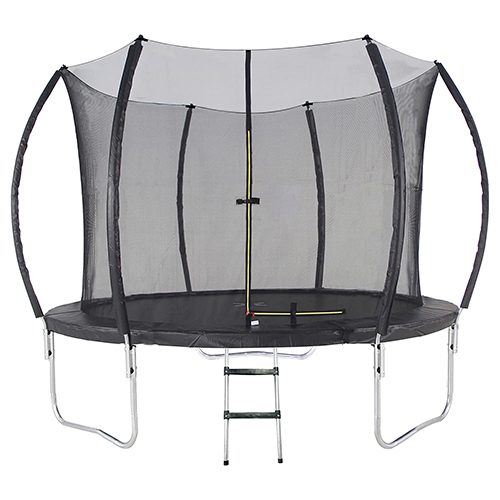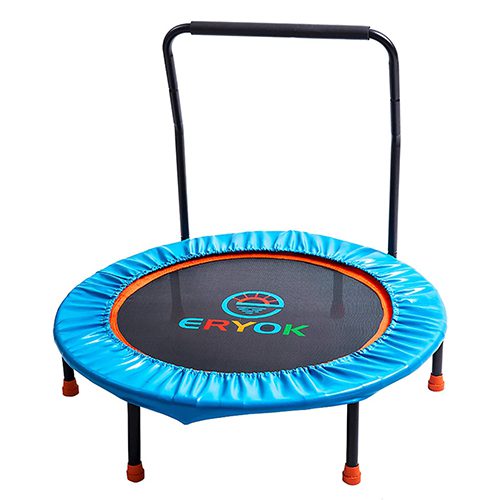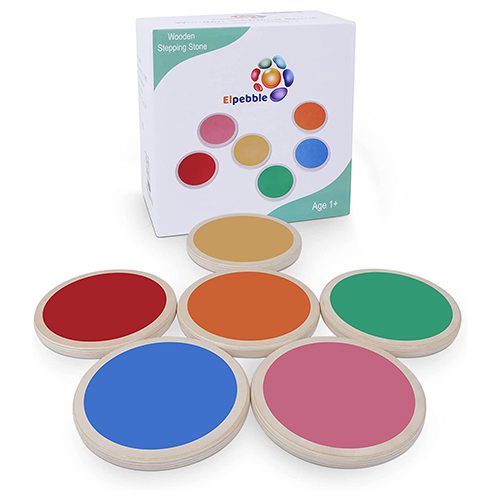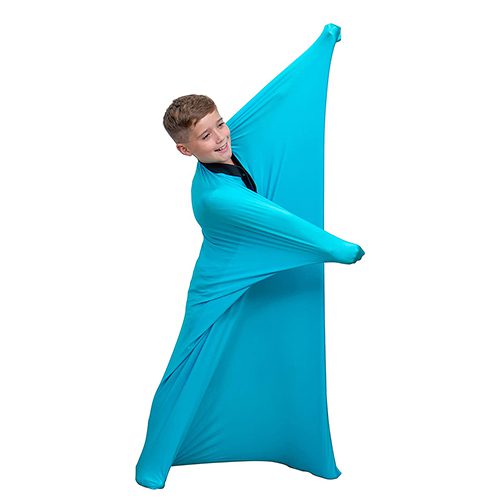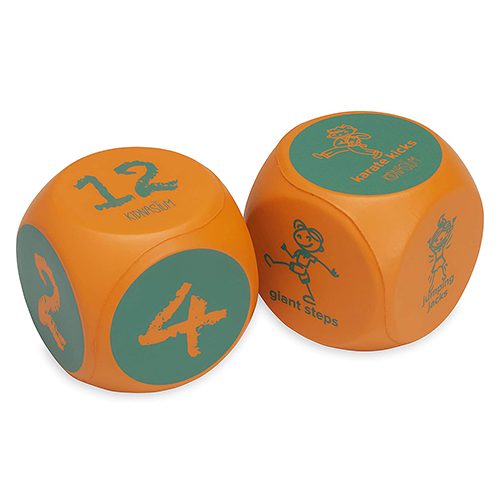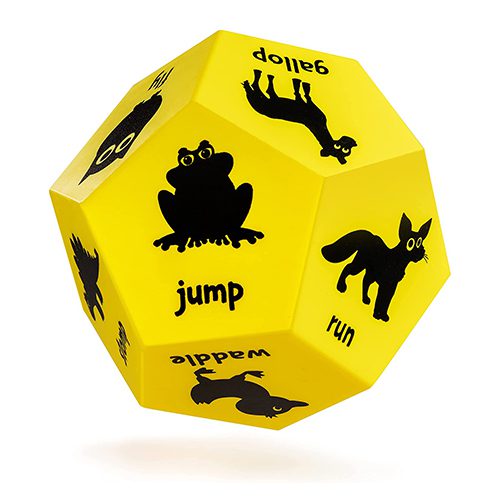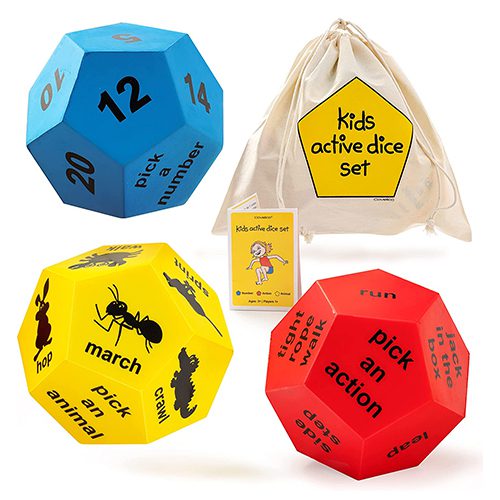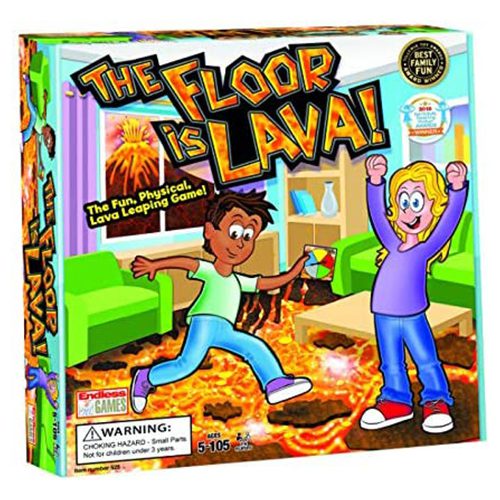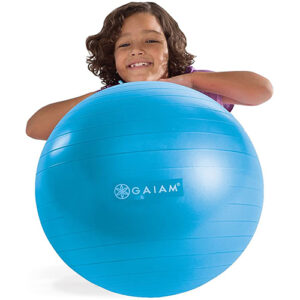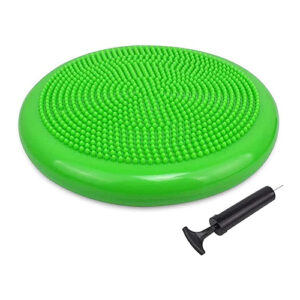The post 10 Activities for Children: Preventing Toe Walking first appeared on Spring Forward Family Centre.
]]>Children should walk in a heel-toe walking pattern to prevent putting unnatural pressure on their hips, knees, and lower back. If your child is above three years old and still toe walks, we recommend that you get proactive and present them with various activities that will lessen their toe walking habits. Here are ten beneficial exercises you can try at home:
1. Manual Stretches
Tight muscles are one of the leading causes of toe walking. Your child should lay on the floor as you do these two helpful stretches!
- Try a calf stretch by taking your child’s foot and applying light pressure by pushing the foot toward their body. We recommend holding this position for fifteen seconds, switching to the other foot, and then returning to the first foot. It would be best if you went through the cycle twice!
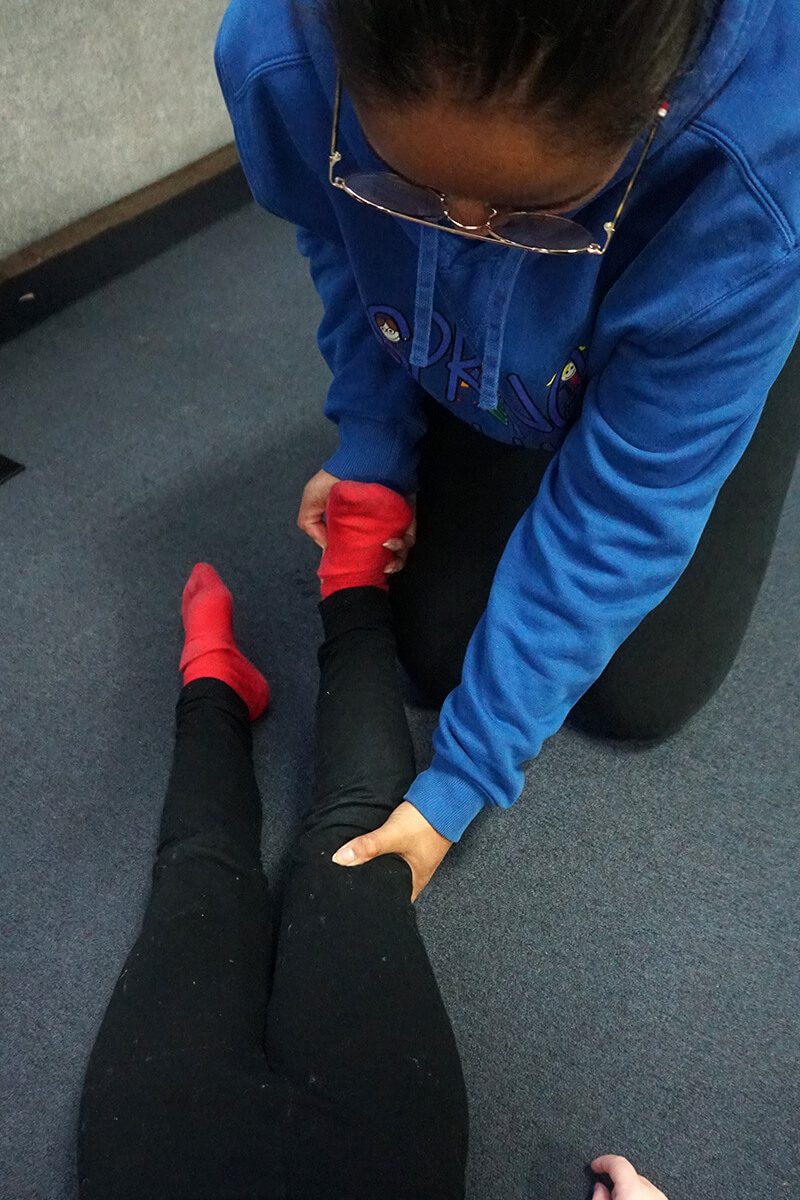
- Try a hamstring stretch by telling your kid to place both feet flat on the floor. They’ll still be lying down, but their knees will be positioned upward. While their opposite foot stays grounded on the floor, you will raise their other leg toward the sky. You should hold their foot up — and their leg should be relatively straight! It’s recommended that you hold this stretch for fifteen seconds. Switch sides and then do it again!
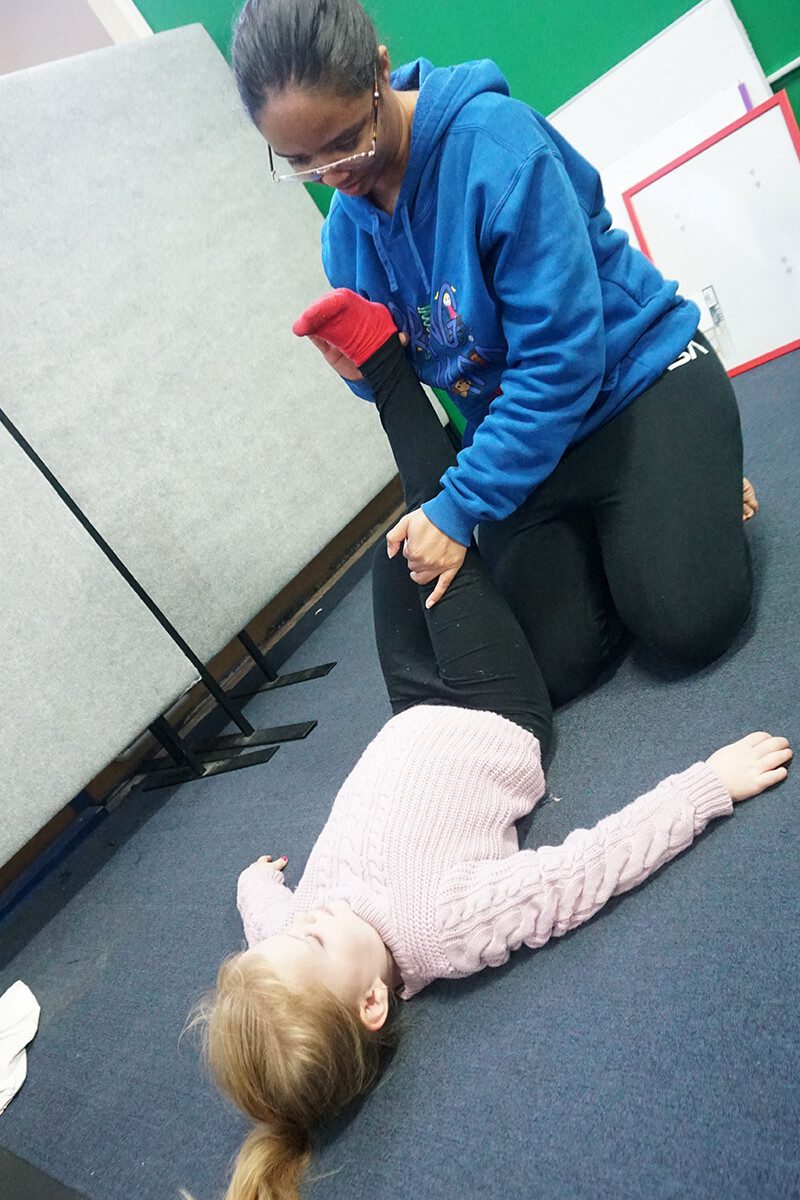
2. Downward Dog
The practise of yoga helps with stability, flexibility, and strength. We certainly don’t expect your young child to be a yogi — but practising the downward dog will significantly benefit their hips! Since many children walk on their toes partly due to hip tightness, various hip stretches will help loosen those muscles.
3. Squat and Play
If your young child wants to play with action figures or dolls on the floor, you can challenge them to squat while playing. They should have their heels planted to the floor as much as possible! While they’re playing with their toys low to the floor and in a squatting position, they will be participating in a deep calf stretch.
4. Scooter Play
Who said strengthening your child’s legs and ankles couldn’t be fun? You could opt to purchase sitting scooters for your child (and possibly their siblings or friends), so they can feel like they’re playing instead of rehabilitating. They should place their hands on the floor, heels on the ground, and toes in the air. They will have a blast floating around on their scooters!
You can find these fun scooters online or in-store near you. Your child can race or come up with their own games — the meaningful aspect is that the sitting scooters will strengthen their muscles!
5. Marching on the Spot
Put on some of your child’s favourite music and have them march to it! They need to bring their knees high and land with their feet flat on the ground. This activity will demonstrate how their feet should land on the floor with a heel-toe walking pattern.
6. Walk or Hike
We’re not suggesting going on a leisure walk or hike — you should find a walk or hike that has plenty of uphill slopes! The rugged slopes will provide a nice stretch to your child’s calves and Achilles tendons (and yours, too!). It will also force your child to firmly place their heels on the ground to propel themselves forward.
7. Play on Uneven Surfaces
Take your child to a sand-filled park or purchase a small sandpit! When a child who typically walks on the balls of their feet plays on uneven ground, they’re forced to utilize every part of their foot to navigate the bumpy terrain.
8. Stand on One Foot
This activity may sound silly, but challenging your child to stand on one foot will help them stretch their Achilles’s tendons and strengthen their ankles! It will also force them to work on their balance and stability. Once their ankles get more stable, they may be more willing to use a heel-toe walking pattern.
9. Wobble Cushion
You could opt to purchase a wobble cushion to encourage your child to boost their balance! They will be forced to use their heels to dig into the wobble cushion — showing them that they can stay stable while utilizing their heels!
10. Animal Activities
Lastly, their imagination can help them stop toe-walking! They could pretend they’re a crab while walking around with all fours on the ground. If they don’t want to be a crab, they can try becoming a penguin. Penguins should walk with their heels down and toes up — quite the opposite of their current walking pattern!
Want more information or guidance, connect with our team today!
MHNSF Pty Ltd T/A Spring Forward Family Centre is a participant in the Amazon Services LLC Associates Program, an affiliate advertising program designed to provide a means for sites to earn advertising fees by advertising and linking to Amazon.com.
The post 10 Activities for Children: Preventing Toe Walking first appeared on Spring Forward Family Centre.
]]>The post Toe Walking in Children: Should Parents Be Worried? first appeared on Spring Forward Family Centre.
]]>Your child walks around on their toes — what’s the big deal, anyway? Toe walking is fairly common in children who are just learning to walk, but most kids naturally outgrow it. While you shouldn’t be worried if your child walks on their toes when learning to walk, you should start being concerned if they continue this walking pattern after three years old. Here’s what you should know about toe walking in children and how to navigate it:
Why Is My Child Toe Walking?
There are many reasons a child isn’t walking in the regular heel-to-toe pattern. Young children learning to walk will typically use toe walking because it helps them maintain their balance and stability. Some children stick to this walking pattern because they’ve grown comfortable with it, and it becomes a pattern.
Other kids walk on the balls of their feet because their Achilles tendons are too short or tight. If the Achilles tendon is too short, the child could have issues physically placing their heel on the floor. Children could opt to walk on their toes because their calf muscles, hip flexors, and hamstrings are too tight. Hypermobile children may also toe walk because they deem it more comfortable.
Toe walking has been linked to cerebral palsy, muscular dystrophy, and autism. It’s important to note that if your child is toe walking, that doesn’t necessarily mean there are underlying conditions!
What is Idiopathic Toe Walking?
Idiopathic toe walking (ITW) is when children over the age of three continue to walk on the balls of their feet — affecting approximately 7-24% of children. The word idiopathic means that the exact cause of the toe walking is unknown. Experts don’t exactly know why children with no underlying disorders habitually walk on their toes.
Does Toe Walking Negatively Affect My Child?
If your child continues walking on their toes after turning three, they have a higher likelihood of experiencing undesirable side effects. Since the natural walking pattern for humans is heel-to-toe, the unusual emphasis on the toes puts unnecessary stress on other areas of the body.
Every parent wants their young child to grow up healthy. Here’s the issue with toe walking: unnatural tension is placed on the hips, knees, and lower back. This abnormal walking pattern can cause improper bone growth or create ligament issues as kids age.
If children continue to toe walk, they’ll begin experiencing tightness in the muscles supporting their hips and knees. The body is a complex interconnected system that requires balance to work optimally — putting unnecessary pressure on the hips and back can further throw off the child’s gait. The child will suffer hip stability issues and other related discomforts as they continue to grow.
How Can I Get My Child to Stop Toe Walking?
Children tend to toe walk because they want to feel more stable — whether it’s because they have tight muscles, hypermobility, or another underlying reason. If you’re reading this blog post, you’ve already taken the first step to getting your child the proper help they need to stop toe-walking.
You should begin helping your child by reminding them to focus on walking in a heel-toe pattern whenever possible. It’s essential to keep it in the forefront of their mind! If you want to work with your child at home, you should focus on stretching their muscles that may be affecting their gait.
We have a blog post specifically dedicated to various activities that will help your child stop toe-walking. You can find it here: (insert link to toe walking activities blog post).
Concerned or have questions? Connect with our physio team today!
Want to get started? Book your intake call today!
Contact us to book an assessment
The post Toe Walking in Children: Should Parents Be Worried? first appeared on Spring Forward Family Centre.
]]>The post Activities for Children with Low Muscle Tone first appeared on Spring Forward Family Centre.
]]>If you’re a parent, you will absolutely feel worried if your newborn, infant or child has been diagnosed with low muscle tone. Or, if you just know something is not quite right with how your child is learning to move.
Here’s the thing: help is available and hope is real! We are a team of allied health professionals in Western Sydney, Australia, who have seen children live happy and productive childhoods with low muscle tone. The best thing you can do for your child is to keep them active and consistent with their exercises, and if you are worried – seek help! While low muscle tone will never completely go away, there are various activities your child can do to keep their muscles stable and strong:
Take Them to the Playground
When your child is old enough to run, jump, swing, and climb — take them to the playground! Children with low muscle tone need to utilise their entire muscular system to maintain stability and strength throughout their bodies. Your child will have the time of their life on the playground, without noticing the various structures targeting specific muscles as they play.
Helping Hands
You can incorporate showing your child how to help around the house with physical therapy by having them carry items! For example, ask your small child to carry a carton of milk or bag of groceries into the house. Not only will they feel like they’re doing their part to help their parents — but the added weight will build muscle!
Jumping on a Trampoline
Do you see the common theme here? Your child with low muscle tone should be as active as possible. While low muscle tone generally makes children feel more fatigued after physical activity, they will slowly gain strength and endurance with repetition. Jumping on a trampoline is fun— they may not even realise they’re engaging in physical therapy! You will gradually notice your child’s balance, endurance, and energy levels improve as they remain consistently active.
Home Obstacle Courses
Think Safety First! But also consider making it creative: could you play floor is lava or make an obstacle course with your furniture inside your home? Dining room chairs with a sheet over the top make great tunnels or take the sheet off and play climb over and under – under one chair, over the next. Empty ice cream containers with some string attached as handles can make steppers, old pillows on the floor as stepping-stones. What fun ways can you and your family move around your home?
Animal Walks
For kids over 2 who are confident walkers, avoid plain old walking around the house. How can you inspire them to use their bodies in unique ways when doing the routine (and often mundane) day to day life activities at home? Here are some of our favourites!
- Clean up your room like a frog
- Walk to the bathroom like a bear
- The Waiting Lizard: walk around the living room like a lizard while you wait for afternoon tea
- The Dancing Robot: complete brain gym cross crawl pattern. 15 per scoop of ice cream
If you want to add to your supplies, consider some of these:
The post Activities for Children with Low Muscle Tone first appeared on Spring Forward Family Centre.
]]>The post Hypotonia in Kids: What to Know About Low Muscle Tone first appeared on Spring Forward Family Centre.
]]>Everyone wants their child to be healthy — the muscular system plays an integral role in supporting children’s bodies, blood circulation, and movement. Kids with hypotonia (medical jargon for low muscle tone) won’t show resistance when their joints move. Essentially, the child’s muscles feel soft and floppy. Whether you were just told your child has hypotonia or you’re beginning to think they might — here’s what you should know about low muscle tone in children:
What Is Hypotonia?
So, what exactly is poor muscle tone? Take a moment to relax your arm. Now, take your hand and pinch the relaxed arm’s bicep. Do you notice the tension and tightness in your muscle? When someone has hypotonia, the muscle feels soft and offers little resistance (if any).
Low muscle tone describes the amount of tension and resistance someone’s muscles have while at rest. Muscles should hold a certain level of tightness even when at rest. There’s a common misconception that children with hypotonia are weak — they can actually be quite strong! There’s a difference between muscle tone and strength. Muscle strength can change throughout life, but low muscle tone can’t really change.
While hypotonia is technically a standalone condition, weak muscle tone is often a symptom of other conditions.
Does My Baby Have Hypotonia?
Since hypotonia is typically present at birth, it is most commonly detected in babies and young children. Hypotonia is also called “floppy infant syndrome” because newborns will feel weak and floppy within minutes of birth. Your baby may have little strength, limited interest in moving their arms and legs, and delayed reflexes.
The most common indicators that a baby may have low muscle tone appear in their limbs. If you lift your infant around their tummy and their limbs hang like a rag doll, your child likely has low muscle tone. There are a few other common signs: your baby holds a frog-leg posture, bends their arms at the elbow and keeps them above their head, or has poor head control.
While low muscle tone commonly presents itself in infants, hypotonia persists as the child ages. Children with low muscle tone struggle with increased joint flexibility (often appearing double-jointed), poor balance, poor posture, and fatigue.
How Does Low Muscle Tone Impact My Child?
Your child’s life will undoubtedly be impacted by low muscle tone, so it’s essential that your child visit an occupational or physical therapist to alleviate symptoms and learn to work with it. There are many hypotonia symptoms in children:
- Difficulty sitting upright for extended periods
- Difficulty controlling head movements
- Difficulty changing positions
- Limited interest in playing or physical activity
- Poor posture
- Coordination issues
- Fatigue
- Poor balance
- Poor motor skills
Who Can Help With Low Muscle Tone?
Typically, physiotherapists and occupational therapists provide the best treatment plans for children with hypotonia. Low muscle tone is a spectrum, and can impact a child or adult very individual ways. As a result, a collaboration between physiotherapists and occupational therapists is highly recommended.
Physiotherapists will assess where a child falls on this spectrum, the significance of their tonal challenges, while occupational therapists will assess the skill gaps that might result from low tone and how to help a child or adult increase their independence. Then, a customized plan is created to strengthen the child’s muscles through various activities!
If your child has a low muscle tone, they will undoubtedly benefit from intentional exercises to strengthen the muscles! They should also participate in various activities to improve their coordination, posture, motor skills, and physical endurance.
If low muscle tone is impacting you or your family, start your journey today. Try these activities at home.
The earlier intervention starts, the better results are seen; connect with our physio team and start the assessment process.
It’s important to empower your child and help them learn how to navigate living with low muscle tone — so they can be happy, healthy, and active in their childhood and beyond!
Contact us to book an assessment
The post Hypotonia in Kids: What to Know About Low Muscle Tone first appeared on Spring Forward Family Centre.
]]>The post Pelvic Tilt and Trunk Control: How Can Physiotherapy Help? first appeared on Spring Forward Family Centre.
]]>Do you find yourself constantly telling your child to stand up straight? You’re certainly not alone — poor posture is diagnosed in approximately 38.3% of children. The body is a highly interconnected system that relies on musculoskeletal health to maintain the body’s structure and form. Here’s what you should know about the relationship between your child’s pelvic tilt, trunk control, and their body’s overall health:
The Pelvis Influences Posture
Did you know that the way the pelvis tilts directly affects posture? The pelvis should be stable, symmetrical, and at a 90-degree angle. If your child has a stable pelvis, they should be able to maintain an upright and healthy posture through various exercises.
Since the pelvis heavily influences posture, many children with poor posture have a pelvic tilt. There are four pelvic positions: posterior tilt, anterior tilt, forward-shifted pelvis, and neutral pelvis.
Here’s how it works: anterior tilt means the pelvis is tilted forward, posterior tilts indicate the pelvis tilts backwards, and a forward-shifted pelvis means it’s shifted partially forward and backward. The goal is to have a neutral pelvis for a balanced musculoskeletal system! Tilts occur when the pelvic is misaligned — causing pain and posture imbalances.
Luckily, you can correct your posture by getting to the root of the issue. Pelvis tilt corrections are entirely possible with the right types of exercise through physical therapy.
Trunk Control Affects Posture, Too!
Trunk control is one of the most critical aspects of a child’s physical development because it’s responsible for keeping a child stable and capable of controlling their upper body. Your child’s “trunk” is composed of their stomach and back. Since your child’s trunk control is responsible for maintaining their balance, it’s essential that their trunk function normally for them to live a happy and fulfilled life.
If you feel your child has poor posture due to pelvic tilt or trunk control issues, we’re Physiotherapist’s in Penrith, Sydney who are passionate about ensuring your child feels strong and ready to take on the world.
Contact us to book an assessment
The post Pelvic Tilt and Trunk Control: How Can Physiotherapy Help? first appeared on Spring Forward Family Centre.
]]>The post How Physio can help support early development first appeared on Spring Forward Family Centre.
]]>Physiotherapy has traditionally been viewed as rehabilitation associated with injury and recovery. In Spring Forward, we view Physiotherapy as a skill set that can analyze movement and develop strategies to help our clients understand their own bodies and be able to achieve their highest potential. This can start at any age and, yes, even with babies.
As discussed in article 5 Reasons why your child could benefit from Physiotherapy learning starts with movement, but movement is also the catalyst for how our cells develop. When you are around 8 weeks pregnant, your baby starts moving. This occurs before you even start to feel movement (approx. 16-22 weeks). But why all this movement when your baby is getting everything it needs from your womb? Research shows that these movements have a role to play in cell development i.e. hiccups help cells to develop lung tissue and eye movements help retinal cell development.
There are also what we call general movements, which are automatic movements that start to develop around 9-10 weeks. These movements help muscle tone, nerves, and bone structure develop in utero. These general movements can be seen up to the first 5-7 months of a baby’s life. Observing the quality of these movements can even tell us how a baby is doing developmentally. While general movements are not triggered by sensory input (i.e. touch or vestibular input) because they are automatic, they can be influenced by sensory input to achieve the quality of movement needed to be successful in development.
Spring Forward’s Physiotherapy team uses this knowledge to assess where your baby is in terms of their neuro development. Our team uses the information gathered through observation to develop a tailored program that’s easy to implement at home. We aim to empower parents to feel confident in supporting their baby’s development and follow this progress with regular checkups when needed. This way parents can feel secure that their baby is getting exactly what they need to reach their full developmental potential.
Contact us to book an assessment
The post How Physio can help support early development first appeared on Spring Forward Family Centre.
]]>The post Physiotherapy and Autism – How it can help support your child first appeared on Spring Forward Family Centre.
]]>Physiotherapy deals specifically with movement skills at all levels. We help in development, performance, rehabilitation, and improvement of skills like walking, running, balance, climbing, sitting, standing etc. But how can this help your child with Autism Spectrum Disorder (ASD)?
Learning new skills is not an easy task, our brains have so much information that it needs to access and process. Sometimes certain details can be missed. Physiotherapy can help your child to bridge these gaps and help your child’s brain to make sense of how to put together the pieces to achieve their goal.
In physiotherapy one of our main goals is to help children to feel comfortable and confident in their body and movements. We do this by addressing any of the below:
1. Postural control: teaching your child’s brain to activate the correct sequence of muscles to hold certain positions without overloading their system.
2. Muscle tone: often children with ASD can have what we call low tone of their muscles, in physiotherapy we help the brain to generate the muscle readiness needed to move with ease.
3. Malalignment of the body: sometimes when the brain is not sequencing muscles to activate in the correct patterns, our joints or bones do not develop in the typical manner. Physiotherapy can help with things like flat feet, hyperflexible joints or general positioning of the legs (turning in or out).
4. Respiratory control: did you know that your breathing muscle (diaphragm) forms part of what we call your core muscles? When breathing is uncoordinated or we hold our breath that means our core cannot engage. Deep breathing also signals your nervous system to lower your heart rate, blood pressure and stress hormones.
A child who is comfortable in their body and movements tends to be a calmer and happier child. Physiotherapy can help support your family in being healthy and happy and enjoying the journey. Learn more about Physiotherapy at Spring Forward and our Physiotherapist Roxanne.
MHNSF Pty Ltd T/A Spring Forward Family Centre is a participant in the Amazon Services LLC Associates Program, an affiliate advertising program designed to provide a means for sites to earn advertising fees by advertising and linking to Amazon.com.
The post Physiotherapy and Autism – How it can help support your child first appeared on Spring Forward Family Centre.
]]>The post 5 Reasons why your child could benefit from Physiotherapy first appeared on Spring Forward Family Centre.
]]>What are the benefits of Physiotherapy for children? How can Physio help my child specifically?
Physiotherapy in simple terms can be broken down into two words – Physical: meaning body structure and function and Therapy: meaning the process we use to develop, rehabilitate and improve the physical. A physiotherapist will analyse and treat your child’s movement abilities and strategies which include things like sitting, standing, walking, running, jumping and using their bodies to play and navigate their world.
Below are 5 reasons why your child could benefit from Physiotherapy:
1. Learning starts with movement. Did you know that while your little one was growing inside of you their brains were already learning some super cool stuff through movement? In Physiotherapy we look at your child’s movement and that can tell us loads about their development
2. Prevention is better than cure. Bringing your child in for a physiotherapy assessment does not necessarily mean they have a movement disorder, but it can give you more information on how to support them at home and even in their current therapies or groups.
3. A solid foundation allows you to build a higher tower. We have all watched kids try to build a tall tower and the higher they go the more unstable things get. Movement difficulties like balance can be difficult to spot when kids are young, we may think: “they will grow out of it” but as time goes on this can really affect their performance. Physiotherapy helps to identify areas where kids may struggle later, through movement analysis and observations.
4. A moving body is a healthy body. Children who are allowed to explore and move have shown to be healthier and happier. In physiotherapy, we not only encourage movement, but we have specialized skills and handling techniques to help your child move in a healthy way
5. Confidence goes a long way. Children who are struggling with movement difficulties may appear shy or withdrawn. Being free to play with friends, show off tricks and explore are skills that your child can learn in physiotherapy.
A child who is comfortable in their body and movements tends to be a calmer and happier child.
Interested in starting physiotherapy for your child? Contact us.
Roxanne is our Physiotherapist at Spring Forward. View Roxanne’s profile to learn more about her.
The post 5 Reasons why your child could benefit from Physiotherapy first appeared on Spring Forward Family Centre.
]]>

